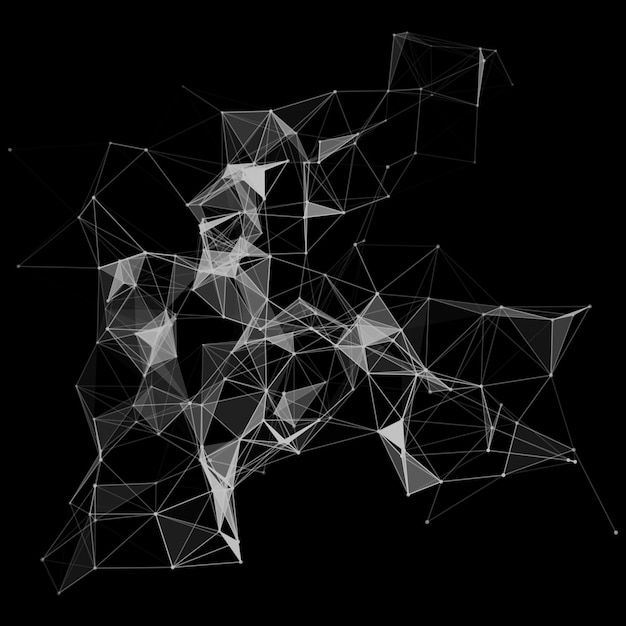
Polygon Meshes in Computer Graphics
What are Polygon Meshes?
- Polygon meshes are fundamental structures in computer graphics used to represent 3D objects.
- A polygon mesh is composed of vertices, edges, and faces that define the shape and surface of an object.
- Vertices are points in 3D space, edges connect these points, and faces are formed by connecting a set of edges to enclose an area.
Advantages of Polygon Meshes
- Versatility in Representation: Polygon meshes are versatile and can represent a wide range of complex shapes.
- Efficiency in Rendering: Triangular meshes, particularly, are computationally efficient for rendering.
- GPUs (Graphics Processing Units) are optimized for processing triangles, making real-time rendering and simulations smoother.
Disadvantages of Polygon Meshes
- Limitations in Surface Detail: Representing highly detailed and curved surfaces with polygon meshes can be challenging.
- Topology Issues: Managing topology, especially when deforming or animating a mesh, can be complex.
Types of Polygon Meshes
There are two main types of polygon meshes:
1. Triangular Meshes
- Triangular meshes consist exclusively of triangles.
- They are widely used in computer graphics due to their simplicity and efficiency.
- Triangles are inherently rigid geometric structures, which simplify deformation and animation calculations in computer graphics.
2. Quadrilateral Meshes
- Quadrilateral meshes are composed of quadrilaterals, which have four sides.
- While less common than triangular meshes, they offer advantages in certain applications, such as modeling and subdivision surfaces.
- Regular Structure: Quadrilateral meshes often exhibit a regular and structured layout.
- Compatibility: Many geometric surfaces can be accurately represented using quadrilaterals.
What are Curves?
- In computer graphics, curves are mathematical representations of smooth, continuous shapes or paths.
- They play a fundamental role in describing the geometry of objects, defining motion paths, etc.
Parametric Cubic Curves
- Parametric cubic curves are mathematical representations of curves in 2D or 3D space.
- They are defined by parametric equations that describe the position of points on the curve based on a parameter.
- Cubic curves are particularly popular due to their versatility and ability to represent complex shapes.
Parametric Continuity
- Parametric continuity refers to the smoothness of a curve when represented parametrically.
- There are different levels of parametric continuity:
C0 Continuity
- C0 continuity ensures the curve is continuous, meaning there are no visible gaps or jumps between connected segments.
- However, the slope or direction may change abruptly at the connection points.
C1 or Tangent continuity Continuity
- C1 continuity, also known as tangent continuity, ensures that the first derivatives of the curves are continuous at the connection points.
- This results in a smooth transition not only in position but also in direction.
C2 or Curvature Continuity
- C2 continuity, or curvature continuity, requires the second derivatives to be continuous.
- This ensures a smooth transition in curvature, providing a more aesthetically pleasing and natural-looking curve.
Geometric Continuity
- Geometric continuity extends the parametric continuity concept to include the curve's visual appearance.
- It considers how the curve looks rather than just the mathematical representation.
G0 Continuity
- G0 continuity ensures that the curves are visually connected without any gaps.
- However, there may be visible changes in curvature or direction.
G1 Continuity
- G1 continuity requires visual smoothness in terms of both position and tangent direction.
- This results in a curve that looks visually continuous to the observer.
G2 Continuity
- G2 continuity demands a smooth visual transition not only in position and direction but also in curvature.
- This creates a curve that appears visually seamless and natural.
Parametric Continuity vs. Geometric Continuity
- Parametric Continuity: Refers to the smoothness of the mathematical functions describing curves or surfaces.
- Focus: Concerned with the continuity of parameter values (e.g., time parameter in animation).
- Example: In animation, ensuring smooth motion as time progresses, maintaining a continuous change in parameter values.
- Application: Crucial in fields like computer-aided design (CAD) and animation to ensure fluid transitions between different states.
- Geometric Continuity: Relates to the smoothness of the actual geometric shapes, irrespective of parameter values.
- Focus: Concentrates on the visual appearance and shape continuity of curves or surfaces.
- Example: In computer graphics, ensuring that two adjacent surfaces have smooth transitions in shape without abrupt changes.
- Application: Important in 3D modeling and rendering to create visually pleasing and seamless surfaces.
Key Difference:
- Parametric continuity deals with the smoothness of mathematical functions, considering the parameter values over time or space.
- Geometric continuity focuses on the visual smoothness and coherence of shapes, regardless of the underlying parameterization.
Conclusion
Principles of polygon meshes are essential in computer graphics, offering versatility in representation but posing challenges in detailed surface depiction.